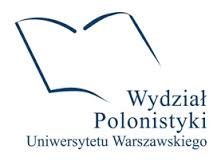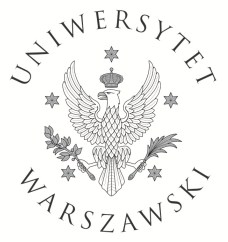| ARTICLES AND DISSERTATIONS |
| Marzena Stępień, Natalia Siudzińska |
On the structure of language. Trial classification of speech disorders in the light of contemporary knowledge on the structure of language (Part I) This article attempts to present the state-of-the-art knowledge on the structure of language (syntax, lexicology, morphology and phonology with phonetics) in a possibly transparent and adequate way, while demonstrating how this knowledge can be used in the work of a speech therapist. The article provides a brief overview of the key information on the hierarchical structure of language: the subdivision into langue and parole, elements constituting various systems within langue, i.e. the language system, and the corresponding elements of parole (i.e. our utterances which make use of the language system). The authors aim to demonstrate that such knowledge may prove useful in developing adequate tools for diagnosing speech disorders and in evaluating progress in speech therapy. It may also become a point of departure for classifying various forms of those disorders, as shown in the paper entitled Speech disorders and the structure of language (Classification of speech disorders in the light of contemporary knowledge on the structure of language. Part II). |
| Speech disorders and the structure of language. Trial classification of speech disorders in the light of contemporary knowledge on the structure of language (Part II) This article, which is a follow-up of the text entitled On the structure of language (Classification of speech disorders in the light of contemporary knowledge on the structure of language. Part I), shows how linguistic knowledge may be used to structure forms of speech disorders in a way which is useful in the work of a speech therapist. The article focuses on disorders such as dyslalia, dysarthria, stuttering, speech underdevelopment of cortical origin and aphasia. Given the complexity of the latter case, which also includes linguistic symptoms, the authors invoke two different classifications of aphasia types: a more recent one (the so-called Boston classification) and an older one, developed by A.R. Luria. The article shows how the two classifications relate to linguistic forms of disorders observed in aphasia and how this can inform therapeutic practice of a speech therapist. |
| Olga Jauer-Niworowska |
Dysarthria – related disorders: An attempt at presenting their pathomechanics. Selected problems in diagnosis In this article the author describes the problems of complex diagnosis of people with dysarthria. The author presents selected methods and techniques used in diagnosis in motor speech, language and cognitive disorders. This text concerns mainly subjective diagnostic methods. However, the author points out the importance of using a combination of objective and subjective diagnostic methods in those types of speech disorders. The article stresses the importance of co‑operation between speech therapists, physicians and psychologists in handling patients with dysarthria. |
| Małgorzata Biernat, Krzysztof Szamburski |
An attempt at assessing the relation between stuttering and the locus of control This article attempts to assess the relation between the locus of control and stuttering. The notion of ‘locus of control’ originates from Julian Rotter’s social learning theory but it has become popular outside that theory in recent years and has been used independently. The subject-matter of this study was to assess the locus of control in stuttering subjects and to juxtapose those findings with data from fluently speaking individuals. The subjects were forty stuttering individuals and a purposeful sample of fluently speaking subjects (selected by age and gender). The study has shown that the locus of control for the total and for the failure scale is different for stuttering and fluently speaking subjects. Moreover, the results of the LOC study varied across different age groups. |
| Karolina Siegel |
Echolalia in the speech of children with a pervasive developmental disorder. A way to escape or to communicate? Communication of autistic people is distorted at both the verbal and the non-verbal level. Their means of communication deviate from the socially accepted standards of communication. Despite this, many of the so-called ‘dysfunctional behaviours’ can serve as communication tools. This article aims to introduce one aspect of communication that occurs in the speech of people with a pervasive developmental disorder, particularly those with autism. It presents a variety of views expressed by researchers dealing with the phenomenon of echolalia. While the article does not resolve any of the existing research disputes, it attempts to present the current state of research in an objective manner. Thus, it can contribute to a better understanding of the phenomenon and facilitate an appropriate therapeutic approach. |
| Jacek J. Błeszyński |
The development of speech and language in children with intellectual disability The article discusses the speech of individuals with varying degrees of intellectual disability. The author presents information about the speech of mentally retarded individuals gathered so far, paying special attention to research on communication. In the introductory section, the author describes the clinical picture and therapeutic activities undertaken for a group of such individuals. Towards the end, the author presents conclusions regarding the direction that speech therapy should take and recommends to collect and analyse data associated with specific impairments which have not been previously described but remain an important condition enabling children to learn the language structure. |
| Marlena Kurowska |
The effects of brain dysfunctions on vocabulary development in children The article presents an analysis of a test which checked the comprehension and independent articulation of nouns, verbs and adjectives by children with brain dysfunctions. The interpretation of research findings reveals certain limitations in children’s understanding of the tested word forms. On the other hand, in children’s own utterances, they presented a varied degree of mastery. It seems that the study managed to capture certain linguistic behaviours which are characteristic of the entire group under study. Above all, those were: reactions which can be viewed as correct in terms of meaning but actualised with phonetic and phonological distortions, behaviours compensating difficulties in actualising and producing correct word forms, substitutive behaviours, wrong reactions as well as non-reactions. |
| Marta Anna Janeczek |
Condition of the speech of children. Presentation of the diagnostic logopedic research This article presents theoretical logopaedics studies and analyses children’s speech in empirical tests. The goal of the study was to diagnose speech disorders. It was carried out on a group of 147 children aged between 3 and 12 attending the Mielnik School Complex. The study employed a diagnostic test for speech evaluation, specifically developed for the research project. The individual test procedure involved checking communication and linguistic competence, in particular articulation and auditory functions as well as phonematic hearing, hearing analysis and synthesis processes. The tests also checked the anatomy and physiological functions of the vocal apparatus in order to juxtapose those elements with model speech disorders and make a preliminary diagnosis. |
| Jakub Skrzek |
Diagnostic tools used to detect articulation defects in children at the preschool and early school age The main idea of this article was to analyse and describe the usefulness of diagnostic tools available on the Polish publishing market that can be employed to detect articulation defects in children at the preschool and early school age. In the theoretical part, the purposefulness of each logopaedics diagnostic procedure is described and then the criteria of correct articulation are defined. From the perspective of speech therapy practice, a crucial distinction is made between articulation defects and articulation errors. The article also defines the types of research procedures which are followed when identifying and describing all articulation defects in children. In the final part of the article the author presents picture questionnaires for speech therapy purposes which have been developed in Poland in the course of many years. |
| Justyna Żulewska |
Speech disorders in children with Duchenne muscular dystrophy The article presents research results concerning speech disorders in children with Duchenne muscular dystrophy. The findings give a picture of disorders which are typical of children with this condition. Those include: reduced efficiency of the articulation apparatus, misarticulation, wrong intonation and sentence stress, problems with maintaining the right rhythm and tempo of speaking, discoordination of breathing, phonation and articulation, problems with vocal intensity, wrong breathing type and rhythm. Speech disorders represent an important part in the clinical image of Duchenne muscular dystrophy. The author stresses that children affected with this disease should undergo speech therapy. |
| Olga Jauer-Niworowska |
Speech therapy of a patient with flaccid dysarthria – a case study This article describes a long-time management process of a 48-year-old female patient with flaccid dysarthria symptoms, after resection of the jugular vein tumour. The article offers a description of speech therapy rules and examples of verbal and nonverbal exercises for the speech apparatus. The author also presents the outcomes of the patient management process. |
| Agata Wdowik |
Elżbieta Wichrowska, Your death. The early days of an intimate diary in Poland on the turn of 18th and 19th century. Antoni Ostrowski ‘The diary of my feelings, or an elegy of the heart’ and ‘The life of the best of wives described by her tender husband for our beloved children’, Warsaw, Spectrum Press 2012 |
| ABSTRACTS OF HABILITATION DISSERTATIONS AND DOCTORAL DISSERTATIONS WRITTEN BY THE STAFF OF THE INSTITUTE OF APPLIED POLISH STUDIES |
| Grzegorz P. Bąbiak |
‘For myself, for my homeland for the posterity’. Selected problems of elites’ art patronage in the Polish territory in the 19th century |
| Agata Wdowik |
Actualisation strategies applied to Enlightenment traditions in social and literary journalism of 1944-1989. An abstract of a doctoral thesis |
| Katia Vandenborre |
A fable in the Polish literature of the 20th century. A narrative abstract of a doctoral thesis |
| BIBLIOGRAPHY OF PUBLICATIONS BY THE STAFF OF THE INSTITUTE OF APPLIED POLISH STUDIES (2011) |



